Note
Go to the end to download the full example code.
Solid Model#
This example shows how to create and shape a solid model.
The solid model implements an extrusion algorithm which creates
a layered solid mesh based on the shell mesh and layup definition.
This solid mesh can be further processed by ExtrusionGuide,
SnapToGeometry, and CutOffGeometry.
Import the standard library and third-party dependencies.
import pathlib
import tempfile
import pyvista
Import the PyACP dependencies.
from ansys.acp.core import (
CADGeometry,
CutOffGeometryOrientationType,
EdgeSetType,
ExtrusionGuideType,
SnapToGeometryOrientationType,
VirtualGeometry,
get_directions_plotter,
launch_acp,
)
from ansys.acp.core.extras import (
FLAT_PLATE_SOLID_CAMERA,
ExampleKeys,
get_example_file,
set_plot_theme,
)
Set the plot theme for the example. This is optional, and ensures that you get the same plot style (theme, color map, etc.) as in the online documentation.
set_plot_theme()
Load a minimal model#
tempdir = tempfile.TemporaryDirectory()
WORKING_DIR = pathlib.Path(tempdir.name)
input_file = get_example_file(ExampleKeys.MINIMAL_FLAT_PLATE, WORKING_DIR)
Launch the PyACP server and connect to it.
acp = launch_acp()
Load the model from the input file.
model = acp.import_model(input_file)
Create a simple layup#
Add more layers to the modeling ply so that it is easier to see the effects of the selection rules.
modeling_ply = model.modeling_groups["modeling_group"].modeling_plies["ply"]
modeling_ply.number_of_layers = 3
Create an initial solid model#
By default, the layup is extruded along the normal direction of the shell mesh.
solid_model = model.create_solid_model(
name="Solid Model",
element_sets=[model.element_sets["All_Elements"]],
)
model.update()
def plot_model_with_geometry(cad_geometry: CADGeometry | None, cad_geom_opacity: float = 0.1):
"""Plot solid model and geometry."""
plotter = pyvista.Plotter()
if cad_geometry:
geom_mesh = cad_geometry.visualization_mesh.to_pyvista()
plotter.add_mesh(geom_mesh, color="green", opacity=cad_geom_opacity)
edges = geom_mesh.extract_feature_edges()
plotter.add_mesh(edges, color="white", line_width=4)
plotter.add_mesh(edges, color="black", line_width=2)
plotter.add_mesh(model.solid_mesh.to_pyvista(), show_edges=True)
plotter.camera_position = FLAT_PLATE_SOLID_CAMERA
plotter.show()
plot_model_with_geometry(None)
def create_virtual_geometry_from_file(
example_key: ExampleKeys,
) -> tuple[CADGeometry, VirtualGeometry]:
"""Create a CAD geometry and virtual geometry."""
geometry_file = get_example_file(example_key, WORKING_DIR)
geometry_obj = model.create_cad_geometry()
geometry_obj.refresh(geometry_file) # upload and load the geometry file
model.update()
virtual_geometry = model.create_virtual_geometry(
name="thickness_virtual_geometry", cad_components=geometry_obj.root_shapes.values()
)
return geometry_obj, virtual_geometry
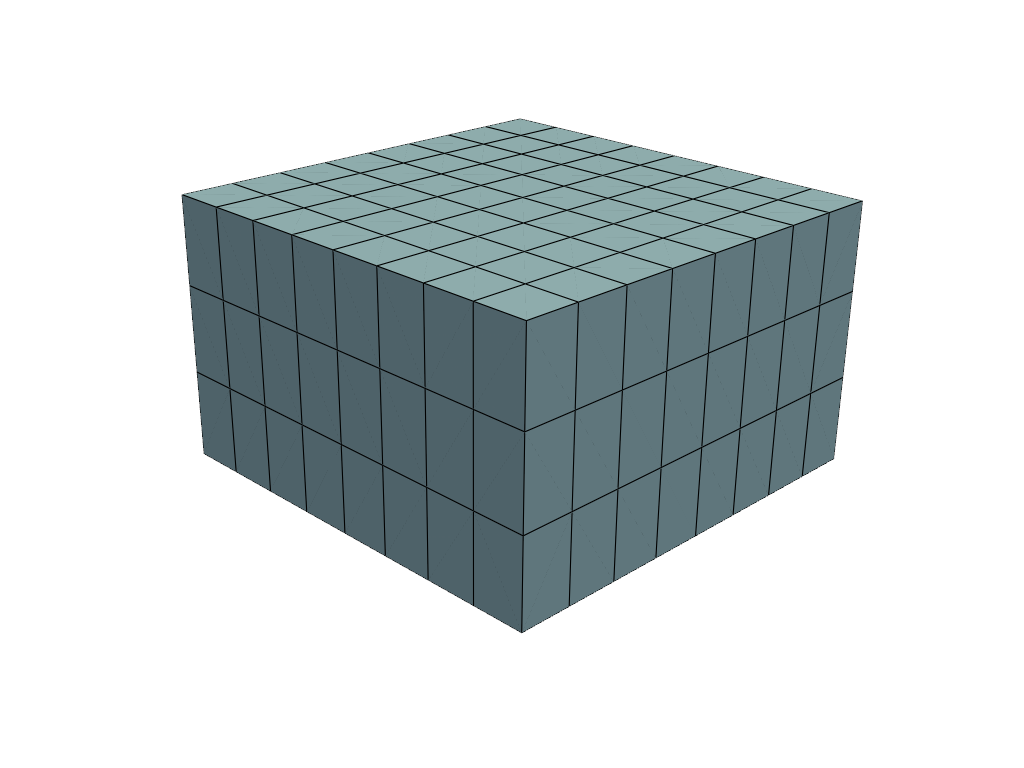
Snap the top to a geometry#
The SnapToGeometry allows to shape the bottom or top of the solid model.
First, import the geometry and then add the snap-to feature to the solid model.
snap_to_geom, snap_to_virtual_geom = create_virtual_geometry_from_file(ExampleKeys.SNAP_TO_GEOMETRY)
solid_model.create_snap_to_geometry(
name="Snap-to Geometry",
cad_geometry=snap_to_virtual_geom,
orientation_type=SnapToGeometryOrientationType.TOP,
oriented_selection_set=model.oriented_selection_sets["oss"],
)
model.update()
plot_model_with_geometry(snap_to_geom, 0.5)
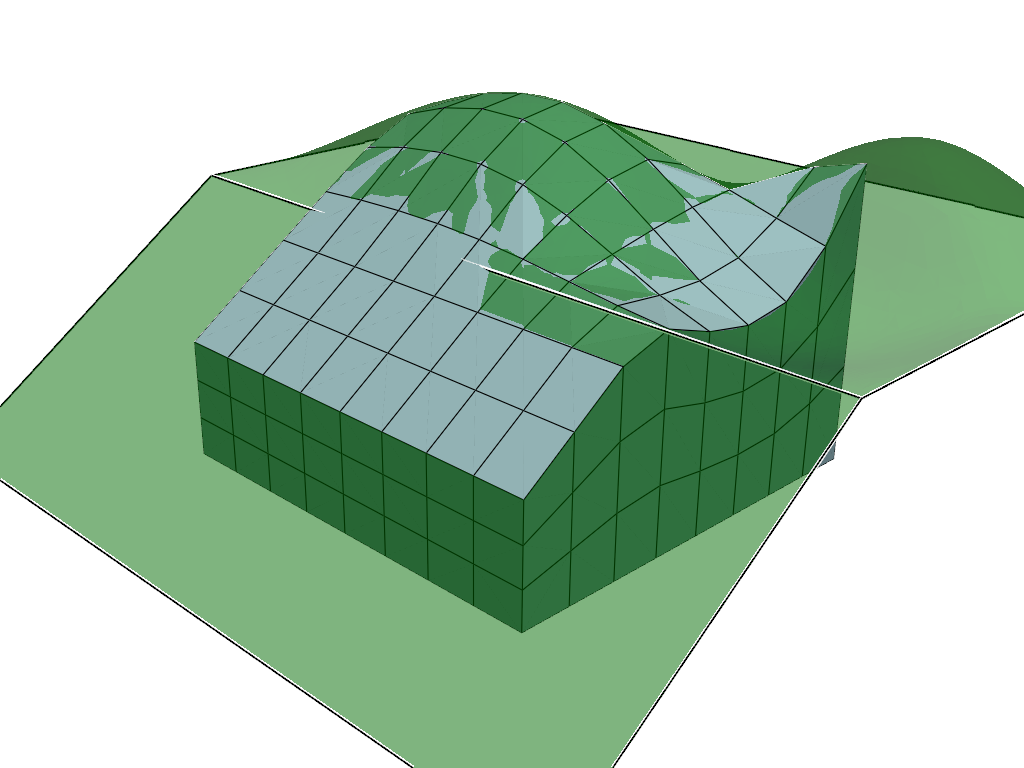
Shape the walls#
The ExtrusionGuide is used to shape the side walls of the solid model.
The feature can be defined by a direction as shown here or through a geometry.
edge_set = model.create_edge_set(
name="Edge Set",
edge_set_type=EdgeSetType.BY_REFERENCE,
element_set=model.element_sets["All_Elements"],
limit_angle=30,
origin=(0.05, 0, 0),
)
solid_model.create_extrusion_guide(
name="Extrusion Guide",
edge_set=edge_set,
extrusion_guide_type=ExtrusionGuideType.BY_DIRECTION,
direction=(-0.5, 1, 0),
radius=0.005,
depth=0.6,
)
model.update()
plot_model_with_geometry(None)
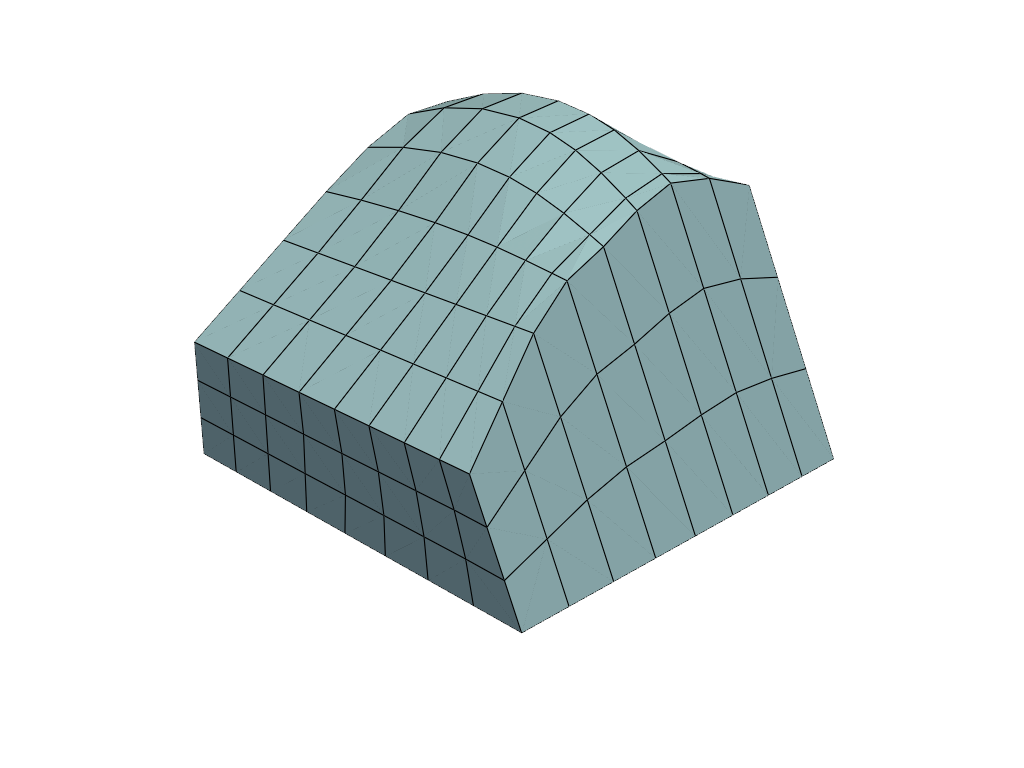
Cut-off an edge#
The CutOffGeometry is used to crop elements from the solid model.
cut_off_cad_geom, cut_off_virtual_geom = create_virtual_geometry_from_file(
ExampleKeys.CUT_OFF_GEOMETRY_SOLID_MODEL
)
solid_model.create_cut_off_geometry(
name="Cut-off Geometry",
cad_geometry=cut_off_virtual_geom,
orientation_type=CutOffGeometryOrientationType.UP,
)
model.update()
plot_model_with_geometry(cut_off_cad_geom)
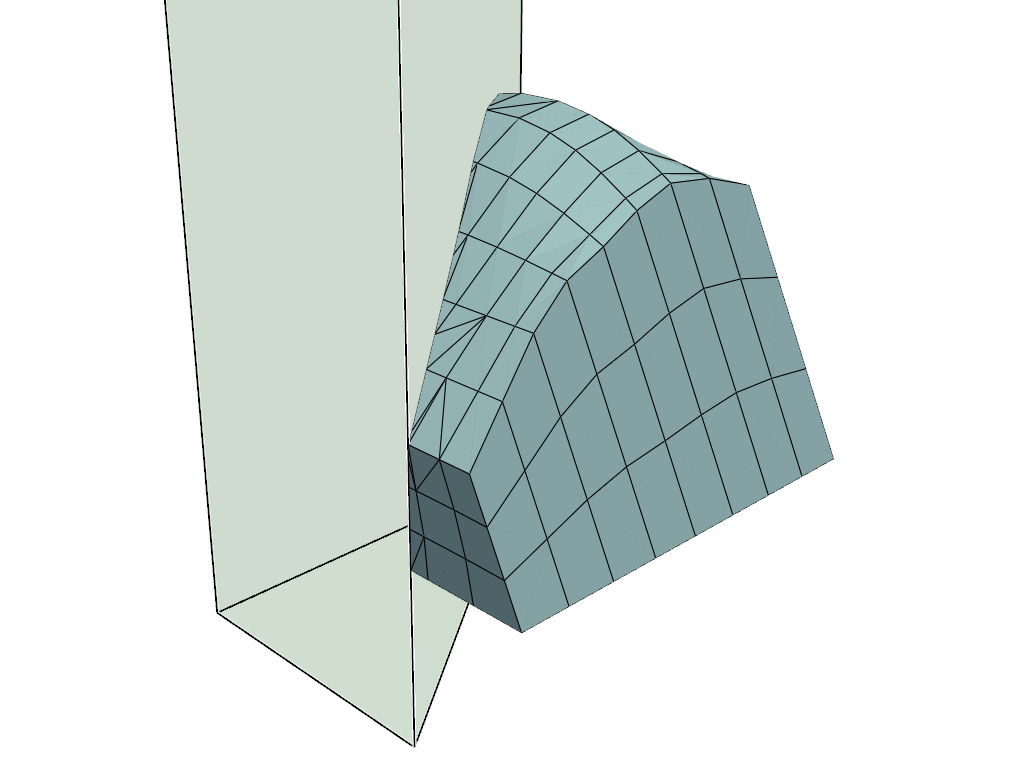
Plot results on the solid mesh#
The plotting capabilities also support the visualization of ply-wise results, such as directions or thicknesses as shown here.
Get the analysis ply of interest
ap = solid_model.analysis_plies["P2L1__ply"]
Plot fiber directions#
direction_plotter = get_directions_plotter(
model=model,
mesh=ap.solid_mesh,
components=[
ap.elemental_data.fiber_direction,
],
length_factor=10.0,
culling_factor=10,
)
direction_plotter.add_mesh(model.solid_mesh.to_pyvista(), opacity=0.2, show_edges=False)
direction_plotter.camera_position = FLAT_PLATE_SOLID_CAMERA
direction_plotter.show()
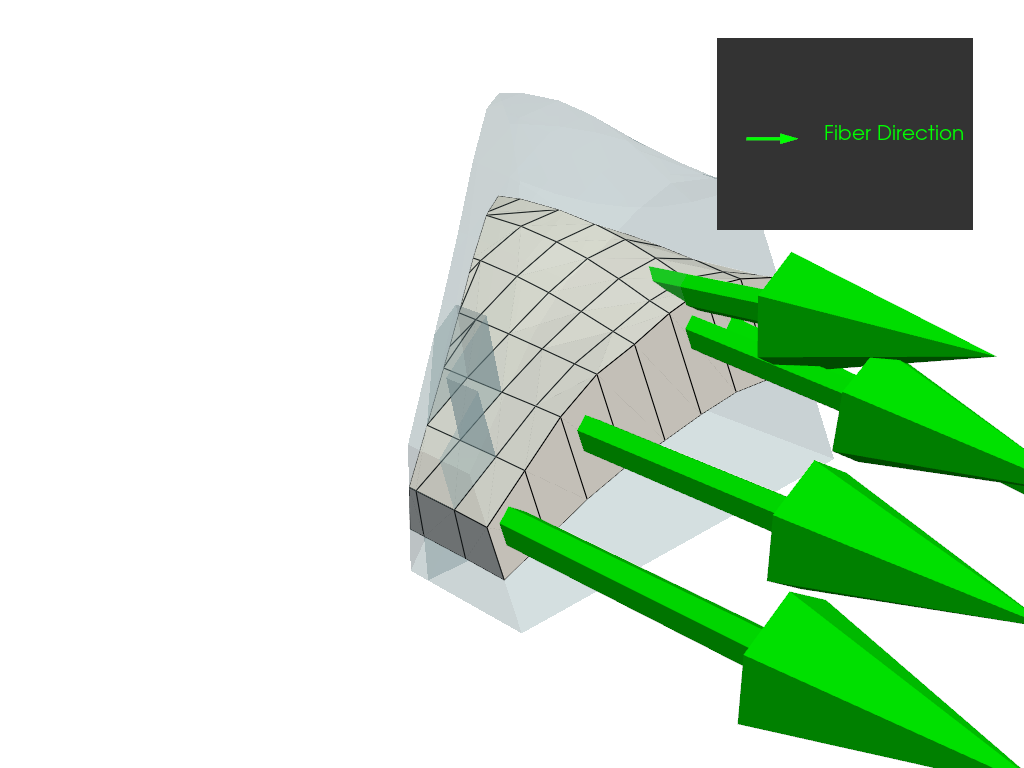
Plot thicknesses#
thickness_data = ap.elemental_data.thickness
thickness_pyvista_mesh = thickness_data.get_pyvista_mesh(mesh=ap.solid_mesh) # type: ignore
plotter = pyvista.Plotter()
plotter.add_mesh(thickness_pyvista_mesh)
plotter.add_mesh(model.solid_mesh.to_pyvista(), opacity=0.2, show_edges=False)
plotter.camera_position = FLAT_PLATE_SOLID_CAMERA
plotter.show()
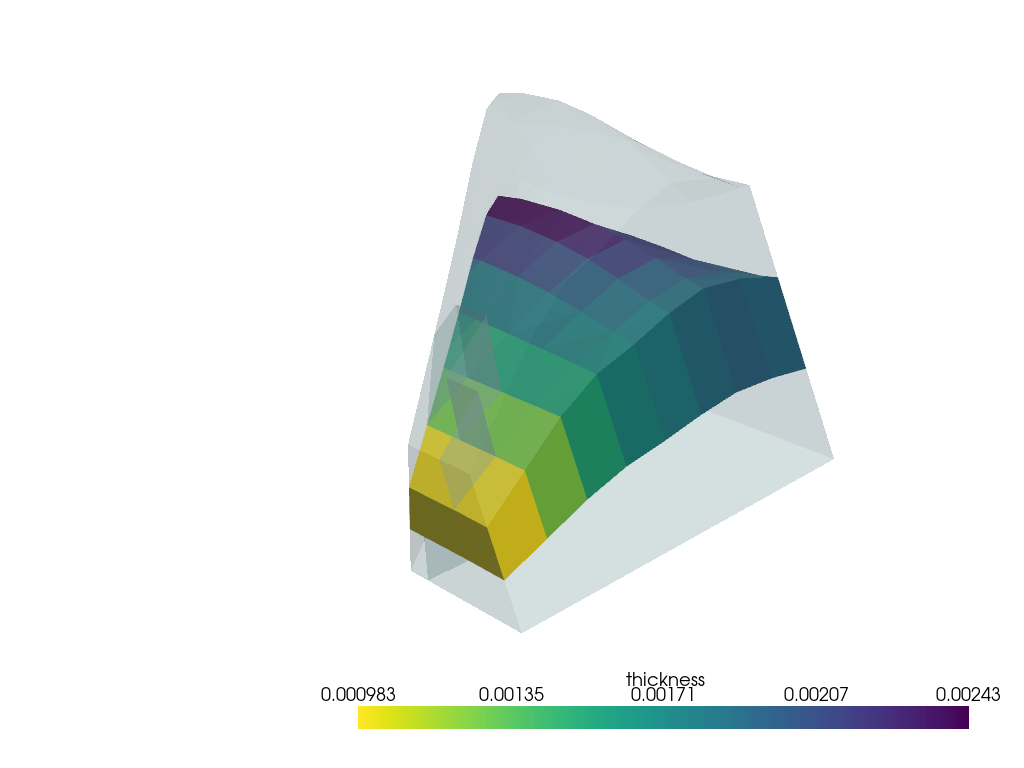
Total running time of the script: (0 minutes 6.046 seconds)

